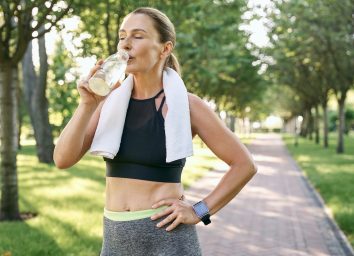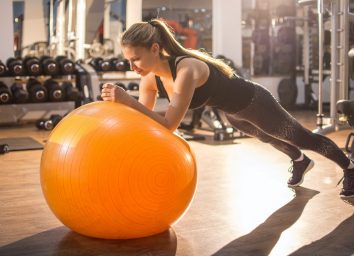Secret Exercise Tricks for Six-Pack Abs After 40, Say Experts
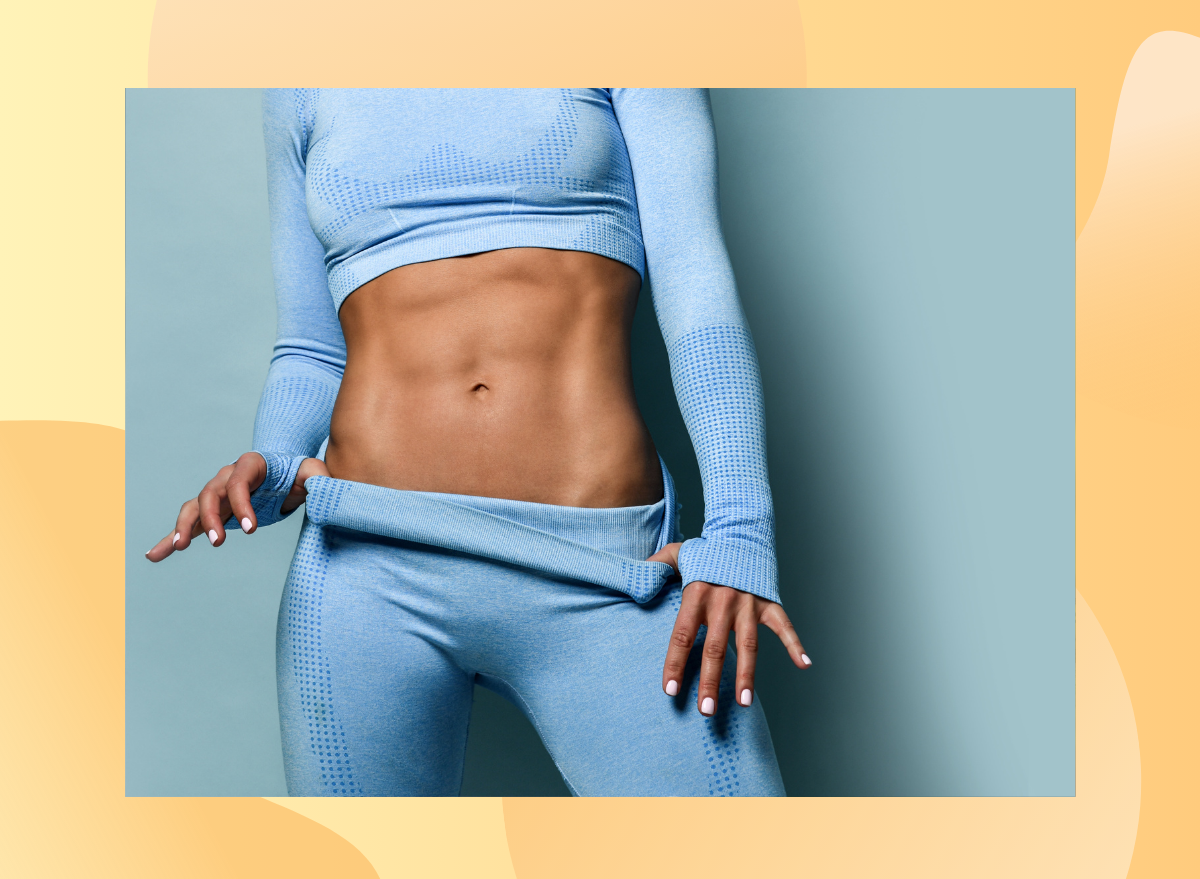
You’ve got a big to-do list when it comes to seeing your abs after the age of 40. It all starts at the grocery store, of course, and for more on that, see here for everything you need to know. But when it comes to your physical activity, there are lot of great tricks you can follow every day—inside and outside the gym, on the sidewalk near your home or in the comfort of your own basement—that can help you finally get that flat, rippled stomach you’ve always dreamed of.
Some of these tips are straightforward, others are counterintuitive. All we can say is: They’re proven to work. So if you’ve crossed the threshold into middle-age and you’re ready to see your abs, take note, because here’s your go-to fitness checklist, courtesy of several top trainers and doctors. And for more amazing fitness advice you can use courtesy of ETNT Mind+Body, don’t miss the Secret Side Effects of Walking Before Breakfast, Says Science.
Do Compound Lifts
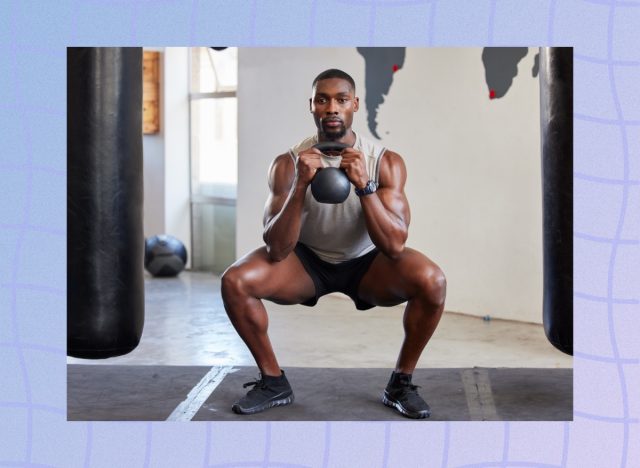
Want abs after 40? Take some advice from someone with rippled abs after 60. “I am 63 and my abs look like a tic-tac-toe board,” says Robert Herbst, a personal trainer and 19-time world champion powerlifter who supervised the drug testing at the 2016 Rio Olympic Games. “The best way to burn fat and have strong abs is to do heavy compound movements such as squats, lunges, and deadlifts, all of which raise your metabolism and work the abs statically.”
The compound movements, he says, will raise your metabolism by working your major muscle groups, which will then be repaired after exercise and get bigger. With more muscle, you’ll be able to burn even more fat. Also, he notes that the compound movements are better for your body than traditional crunches. “The movements build strong abs because your abs work in tandem with the muscles of your lower back to keep your torso upright. Otherwise, you would fold like a chair,” he says. “The movements are also better for your back and spine than doing a zillion crunches, which can damage your discs and put strain on your lumbar spine.” And for more great exercise advice, see here for the Secret Exercise Tricks for Getting Rid of Wrinkles, Says Science.
Change Your Core Exercises
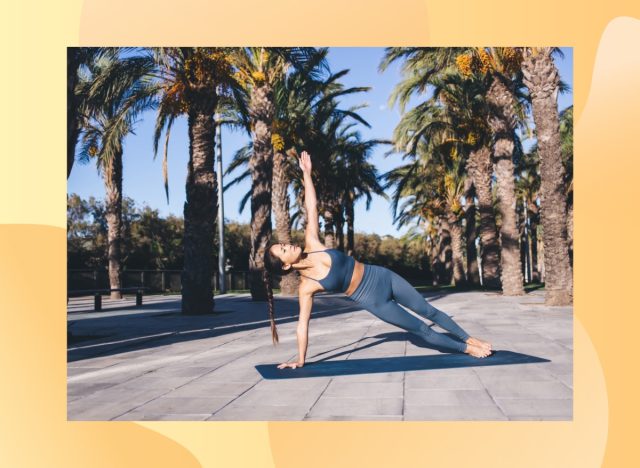
It’s seems counterintuitive to people who associate “abs” with “crunches,” but there are other abs moves you should be doing, says Sam Martin, DPT, of The Move Better Project. “Instead of crunches, focus on exercises like hollow holds and dead bugs that train your abs to resist extension. This is the real function of the rectus abdominus muscle, and will help prevent back pain rather than causing it.”
It’s also important to train the oblique muscles, which control bending sideways and twisting. “Exercises like side planks, Russian twists, and pallof presses are great for working these muscles,” he says. “Not only will strengthening these muscles help keep people pain-free, they also help form the V-shape of the belly that many people seek.” For more on some of these moves, don’t miss the 7 Most Underrated Exercises You’ve Never Tried, Say Trainers.
Repeat After Us: “Never. Stop. Moving.”
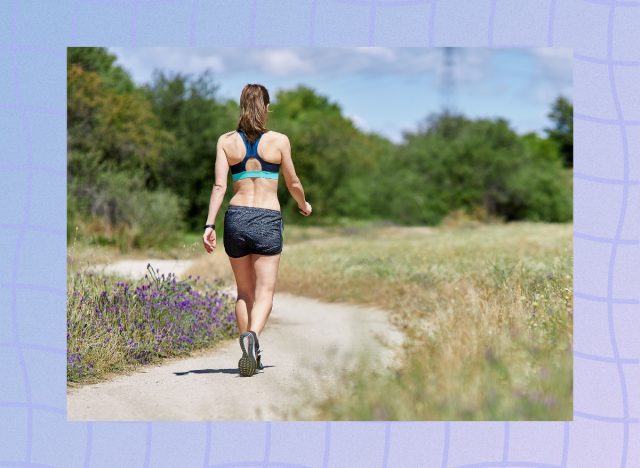
Top trainers will tell you that targeting your abs starts with staying on your feet. “One tip I always give my clients who are trying to lose fat and improve their abs is to stay moving as much as possible throughout the day,” says Joshua Lafond, a NASM-certified personal trainer and founder of Healthy Gym Habits. “Staying moving or even standing helps you burn a lot more calories when compared to sitting at a traditional desk.”
So what do you do if you’ve got a 9-5? Well, Lafond offers this handy checklist: “1) Make it a routine to take a 10-minute walking break every two hours of your workday. 2) Look into if using a standing desk. These have been proven to burn 40 to 80 calories an hour. 3) When going to work, make it a goal to use the stairs instead of the elevator daily. This can have you burning 50 to 100 extra calories a day. 4) If you are on a phone call, walk around your office or home during it.” For more great fitness hacks, see this list of Secret Little Exercise Tricks for a Getting a Lean Body Fast, Say Experts.
Check Your Testosterone
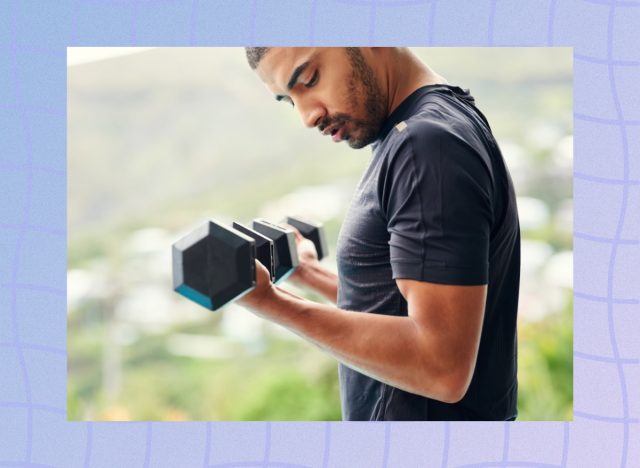
If you’re a man, Jay Soriano, PT, a personal trainer in Maui, recommends that you get your testosterone checked. “The normal range for testosterone is 300-1000 ng/dl, and it naturally decreases as you get older,” he says. “Studies have shown that lower testosterone levels are associated with a higher body fat percentage, which is not what you want if you want abs after 40!”
If you find that your T levels are on the low end, Soriano recommends that you try a few “natural supplements” to get it up, having spoken to an MD about your options.
Never Stop Challenging Yourself
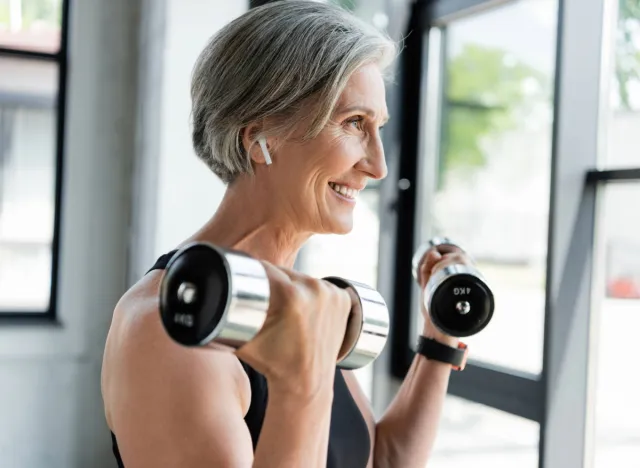
“You need to train your abs like endurance athletes or bodybuilders train their bodies,” says Jake Dermer, CPT, a corporate wellness consultant and author of The Desk Job Survival Guide. “If you can do a plank for a minute then they try for two minutes. Continuously increase the resistance while doing ab exercises. If you can do Russian twists easily, add a weight. Are planks too easy? Try only using one arm.”
Like Herbst, Dermer notes that training your abs is about more than focusing primarily on your abs. “The best exercises for training your abs are heavy resistance exercises like deadlifts, front squats, and weighted push-ups. Heavy resistance strength training is the most efficient way to build muscle and see your abs after 40.”
Lower Your Rest Periods
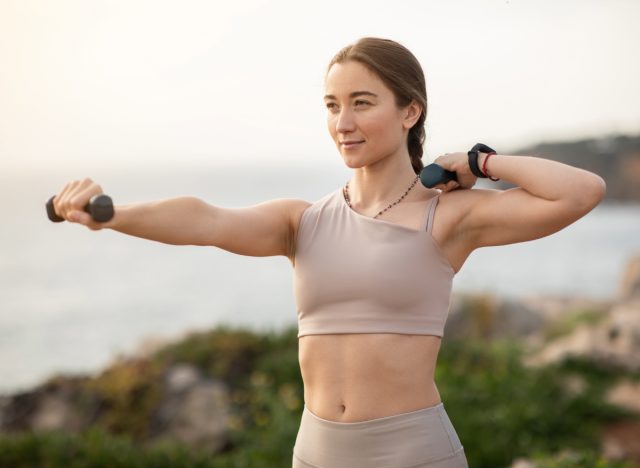
Given that burning fat and getting lean is a major component of seeing your abs, it’s important not to skimp on the cardio. But if you’re not interested in traditional cardio routines, there’s one trick you can use in the weight room, says Lafond.
“Using high repetitions and low rest periods is another great way to get your heart pumping while still lifting weights,” he says. He notes that this is a variation of high-intensity interval training (HIIT), which mimics cardio-style exercise. “When doing this type of workout I recommend keeping the repetition range between 12-15 reps per set. Additionally, as mentioned before the rest period between these sets should be short and no longer than 60 seconds.”
Use The Elliptical
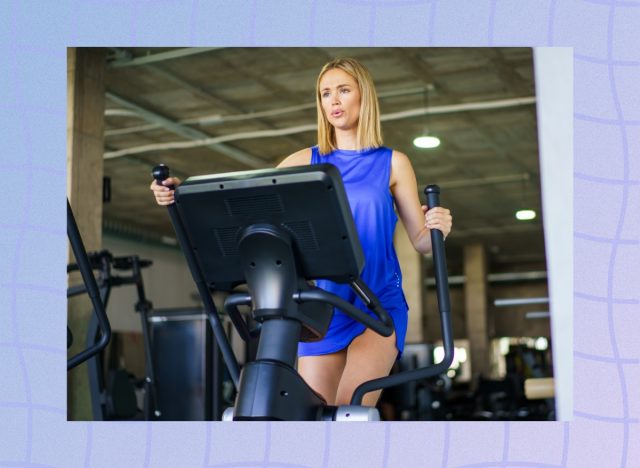
Wait, the elliptical? Yes, the very same, says Patrick O’Connor, a fitness expert and proprietor of Gym Gear Central. “When it comes to abs after 40, a good tactic that I’ve found that many people don’t consider, is including the elliptical trainer into your regimen,” he says.
“The low impact of elliptical workouts are great for your joints,” he says. “Plus, the elliptical trainer, because of its adjustable resistance levels and the fact that the handles allow you to engage your muscles in the running motion, means you get a much more effective muscle-building workout when compared to just running. On top of that, just the effort of balancing and stabilizing yourself on the machine will engage and strengthen your core!”
Never Stop Engaging Your Core
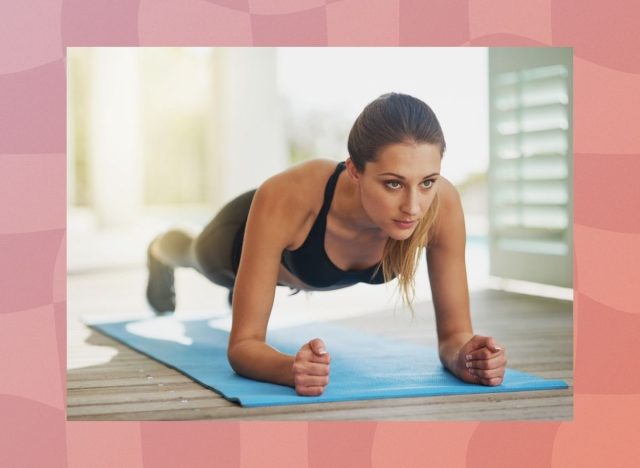
Are you sitting? Squeeze your tummy. Are you standing on an elevator? Squeeze your tummy. Are you driving your car? Squeeze your tummy. “Don’t just perform ab exercises,” says John Gardner, a NASM-certified personal trainer and CEO of the training platform Kickoff. “No matter what exercise you’re doing, be sure to tuck your tummy in and engage those muscles. This can be while exercising, walking, or even while working.” And for more amazing workout advice, don’t miss The Secret Exercise Trick for Losing Belly Fat After 50, Says New Study.
